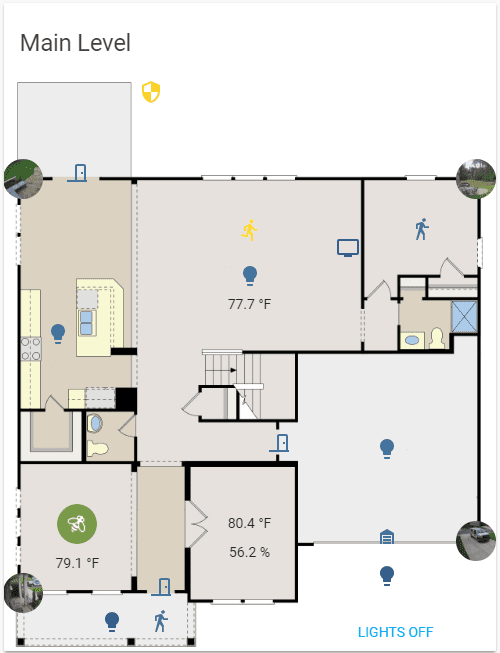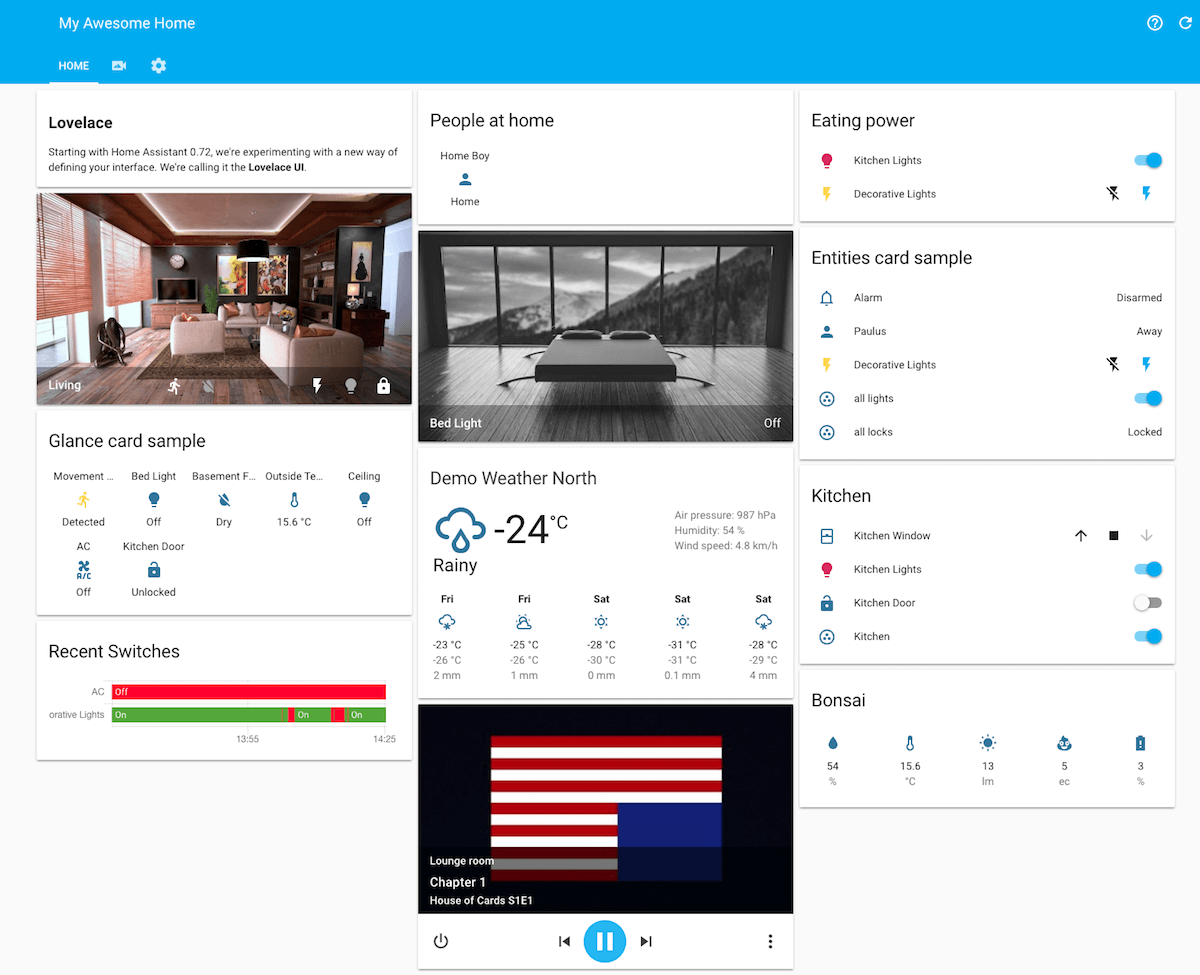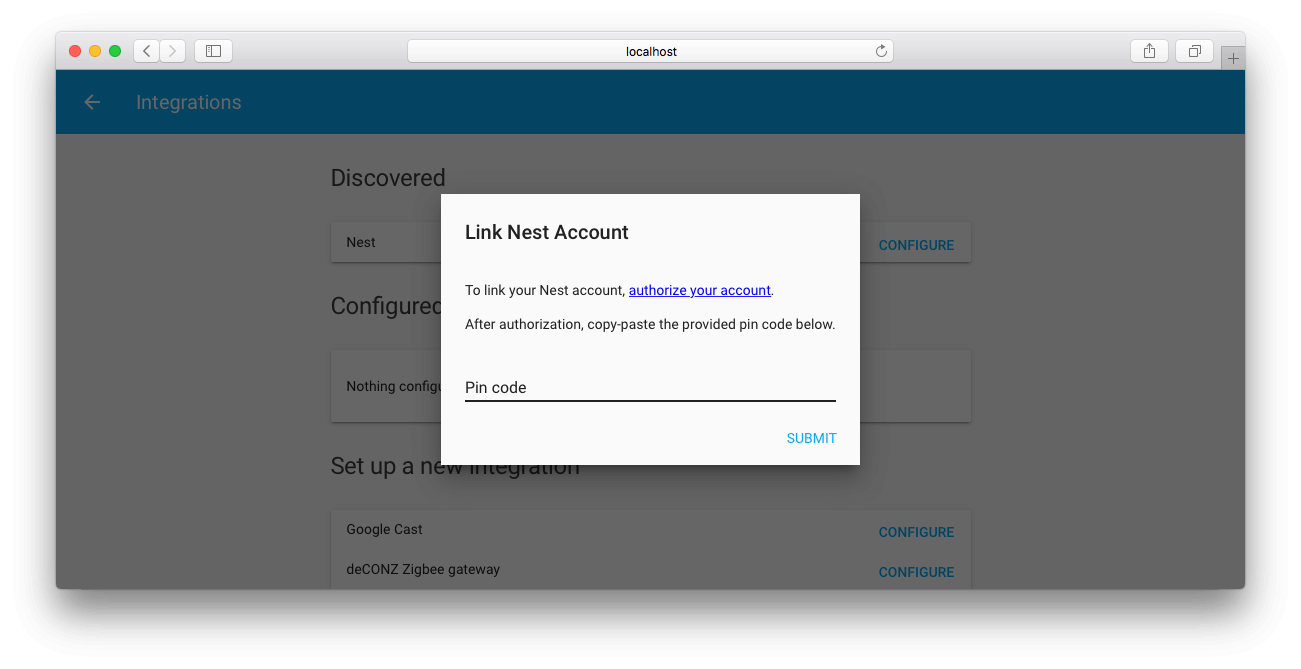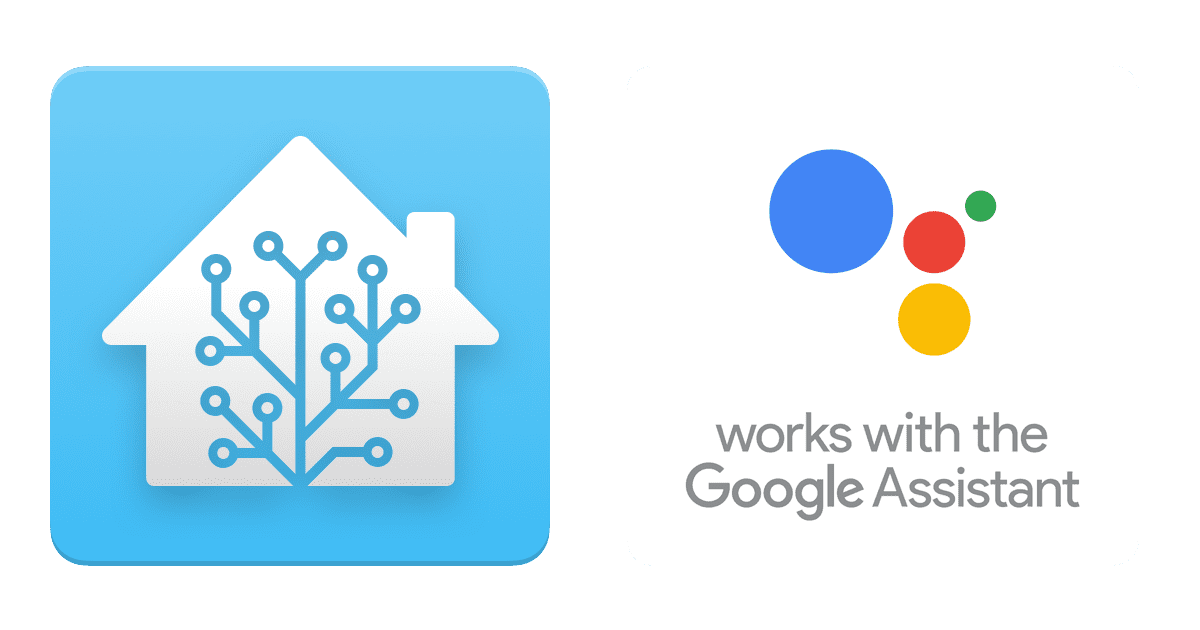Blog
New Hass.io images, based on HassOS
After 4 months of hard work, we are happy to announce our new images for Hass.io, based on HassOS. HassOS is a brand new operating system that we have created specifically for the purpose of running Hass.io. And yes, this supports the Raspberry Pi 3 B+!
What is new
We have built HassOS on top of the [Buildroot] framework. The focus of the system is to be a very small and highly efficient operating system to run Docker like a hypervisor. It has just enough software installed, to run a supervisor. We have also focused on security, there are, for example, no default passwords and we use [AppArmor] to protect the applications and containers on HassOS.
Key features:
- Safe and secure updating with [Rauc] over USB or internet (OTA)
- Uses an LZ4 compressed root filesystem and parts of the memory
- Read-only root filesystem, designed to run on embedded systems
- Dbus connected hosts services
- Latest LT Linux kernel
- Latest Docker-ce version
- Fully supported NetworkManager
- Bluetooth support using Bluez
- Supports lot different hardware
Migration
The design of HassOS is different from ResinOS. Because of this, we can’t provide an OTA update from the old ResinOS system to the new HassOS based system.
You need to perform the following steps to upgrade:
- If you have installed the Bluetooth add-on, please remove it, since it is no longer required.
- Make a Hass.io snapshot of your current system and download it to your computer.
- Download the latest [Hass.io stable][installation] version.
- Flash the downloaded Hass.io image with [balenaEtcher] to your SD card.
- Raspberry Pi: In case you have modified the
config.txt(in the boot partition), you will also need to apply these changes to HassOS. Do NOT simply copy the file from your old setup into HassOS! Apply those changes manually! - If you use a custom network configuration or have configured SSH development access, you need to create a configuration [USB stick]. Copy the resin-sample into the
networkfolder on a USB stick and insert it into your device. - Take the freshly flashed SD card with HassOS and place it into your device, and boot it by turning it on.
- Copy the snapshot into the host with the SSH or Samba add-on.
- Restore your snapshot via the Hass.io panel.
- Done!
Future
HassOS is a wonderful base system and allows us to start working on integrating all kinds of amazing features into Hass.io (and bring them to the UI as well). For example, we are planning on bringing network and Bluetooth configuration possibilities into the UI. The goal is a full featured hub system that allows anybody to use Home Assistant.
The Hass.io API is extensive, and we are going to adopt more of its features into Home Assistant as well. For example, sensors that allows you to monitor the system usage of an add-on or even Home Assistant itself.
A big shout out to all people who donated money for us to buy hardware! Thank you! We have already started on making HassOS compatible with all kinds of hardware and are currently aiming to release support for new devices every 7-14 days and keeping this up until we support all major IoT boards.
Feel free to jump into the project and help us to improve the documentation or other tasks that are going to help us moving forward.
[Rauc]: Safe and Secure Updating
[Buildroot]: https://buildroot.org/
0.73: Preview version new user system, Rachio cloud push and Lovelace goes wild
Today we’re releasing Home Assistant 0.73. First, let’s talk security. Home Assistant has a lot of power. It can control all devices in your house and know what you’re up to. That’s why securing it is very important. It’s absolutely wrong to connect your instance unsecured to the internet and hope no one will find it. All ports on all computers are regularly scanned by bad actors. Please read our guidelines thoroughly and follow them.
In the meanwhile, we’re also working hard on the new authentication system. A preview version is included in this release, more info on our developer blog.
This release also includes a TON of love for the new Lovelace UI. Yes, it’s still experimental but daaang, it’s already so awesome that you should probably just go ahead and try it out. Thanks to all the devs who have jumped on this: @c727
We don’t have time to go through all the changes in this release, but @ciotlosm
 The new picture elements card.
The new picture elements card.
And last but not least, @Klikini
New Platforms
- Support for Homekit Controller climate devices (@armills
- #15057 ) (homekit_controller docs) (climate.homekit_controller docs) (light.homekit_controller docs) (switch.homekit_controller docs) (new-platform) - Rachio webhooks (@Klikini
- #15111 ) (rachio docs) (binary_sensor.rachio docs) (switch.rachio docs) (beta fix) (new-platform)
If you need help…
…don’t hesitate to use our very active forums or join us for a little chat
Reporting Issues
Experiencing issues introduced by this release? Please report them in our issue tracker
0.72: Lovelace UI, KIWI Doorlocks, Wireless Tags, Insteon X10.
I am super excited about this release as it brings some great examples of how we are refining the system to become more customizable and, at the same time, user friendly. The first thing that I am really excited about is a new experimental user interface that we call Lovelace. Check this awesome rundown
Be aware, this is experimental, so things will change. However, we felt like we didn’t want to keep this away from you any longer. Check the Lovelace UI docs on how to get started. Make sure to share your creations!
Thanks to all the people that have been hanging out in the #beta channel on Discord
 Example user interface created using Lovelace ([source](https://gist.github.com/ciotlosm/9508388876edf92c4c1f3579e740fbd5#file-ui-lovelace-yaml))
Example user interface created using Lovelace ([source](https://gist.github.com/ciotlosm/9508388876edf92c4c1f3579e740fbd5#file-ui-lovelace-yaml))
Another change is that Nest, Sonos and Cast will now have to be configured using a config entry. Config entries can be created via the integrations page in the config panel. This is a concept that we have been developing for a couple of months now and it’s our goal to eventually use this as the way to configure all components.
 Screenshot of the Nest config entry.
Screenshot of the Nest config entry.
And as if this releases even needs more cool stuff, the Insteon integration now supports X10 thanks to @teharris1
And finally, we’ll be extending the open beta for Home Assistant Cloud until the first of September.
Enjoy this release and have a good weekend all!
New Platforms
- Weather Platform - IPMA (@dgomes
- #14716 ) (weather.ipma docs) (new-platform) - Add Freebox device tracker (@stilllman
- #12727 ) (device_tracker.freebox docs) (new-platform) - Add IBM Watson IoT Platform component (@mtreinish
- #13664 ) (watson_iot docs) (new-platform) - Wireless tags platform (@sergeymaysak
- #13495 ) (wirelesstag docs) (binary_sensor.wirelesstag docs) (sensor.wirelesstag docs) (switch.wirelesstag docs) (new-platform) - Add netgear_lte component (@amelchio
- #14687 ) (netgear_lte docs) (notify docs) (sensor.netgear_lte docs) (new-platform) - Add Uptime Robot sensor (@ludeeus
- #14631 ) (binary_sensor.uptimerobot docs) (new-platform) - Add support for the Unitymedia Horizon HD Recorder (@benleb
- #14275 ) (media_player.horizon docs) (new-platform) - Add support for KIWI Door Locks (@c7h
- #14485 ) (lock.kiwi docs) (new-platform) - Epson projector support (@pszafer
- #14841 ) (media_player.epson docs) (new-platform) - Add sensor.nsw_fuel_station component (@nickw444
- #14757 ) (sensor.nsw_fuel_station docs) (new-platform) - Add support for ZhongHong HVAC Controllers (@crhan
- #14552 ) (climate.zhong_hong docs) (new-platform) - Xiaomi Cameras - multiple models (@vaidyasr
- #14244 ) (camera.xiaomi docs) (new-platform)
Release 0.72.1 - June 25
- Prevent Nest component setup crash due insufficient permission. (@awarecan
- #14966 ) (nest docs) - Fix socket bug with Yi in 0.72 (@bachya
- #15109 ) (camera.yi docs) - Skip nest security state sensor if no Nest Cam exists (@awarecan
- #15112 ) (sensor.nest docs) - Fix cast config (@balloob
- #15143 ) (media_player.cast docs) - Bump python-nest to 4.0.3 (@awarecan
- #15098 ) (nest docs) (sensor.nest docs)
If you need help…
…don’t hesitate to use our very active forums or join us for a little chat
Reporting Issues
Experiencing issues introduced by this release? Please report them in our issue tracker
0.71: Lagute LW-12, Iperf3, Hydrawise, Ryobi Garage Doors
0.71 has arrived. My favorite feature in this release is the conversion of the Nest component from cloud poll to cloud push. Sure, it’s still through the cloud but changes are now made available in Home Assistant as soon as they happen. Thanks @awarecan
We’ve continued the frontend tweaks after the major overhaul in the last release. We’ve had some issues with the Hass.io panel on both Firefox and Safari. They have been addressed and all browsers should hopefully work again.
On the frontend side, custom panels have gotten some new tricks, including support for building panels using React. So if you’re a developer, check it out. And thanks to @c727
HomeKit support also keeps growing. This release includes support for media players, automations and outlets thanks to @schmittx
And in case you missed it, @OttoWinterconfiguration.yaml. Check it out.
Have a good weekend everyone!
New Platforms
- Lagute LW-12 Wifi LED control (@jaypikay
- #13307 ) (light.lw12wifi docs) (new-platform) - Add Xiaomi Aqara Lock support (@SchumyHao
- #14419 ) (xiaomi_aqara docs) (lock.xiaomi_aqara docs) (new-platform) - Add Iperf3 client sensor (@tchellomello
- #14213 ) (sensor.iperf3 docs) (new-platform) - Add homematicip cloud climate platform (@mxworm
- #14388 ) (homematicip_cloud docs) (climate.homematicip_cloud docs) (new-platform) - Add Hydrawise component (@ptcryan
- #14055 ) (hydrawise docs) (binary_sensor.hydrawise docs) (sensor.hydrawise docs) (switch.hydrawise docs) (new-platform) - Adding ryobi garage door opener (@guillaume1410
- #14618 ) (cover.ryobi_gdo docs) (new-platform) - Add sensors and services to RainMachine (@bachya
- #14326 ) (rainmachine docs) (binary_sensor.rainmachine docs) (sensor.rainmachine docs) (switch.rainmachine docs) (new-platform) - Add Flock notification platform (@fabaff
- #14533 ) (notify docs) (new-platform)
New Features
- Add HomeKit support for media players (@schmittx
- #14446 ) (homekit docs) (new-feature) - Add HomeKit support for automations (@schmittx
- #14595 ) (homekit docs) (new-feature) - Extend package support (@cdce8p
- #14611 ) (new-feature) - Change nest to cloud push (@awarecan
- #14656 ) (nest docs) (binary_sensor.nest docs) (climate.nest docs) (sensor.nest docs) (new-feature) - Add support for outlets in HomeKit (@schmittx
- #14628 ) (homekit docs) (new-feature)
If you need help…
…don’t hesitate to use our very active forums or join us for a little chat
Reporting Issues
Experiencing issues introduced by this release? Please report them in our issue tracker
esphomelib - A comprehensive solution for using ESPs with Home Assistant
The ESP8266
Setting up these microcontrollers for some basic functionality has also gotten really easy over the years with popular projects like ESPEasy or Sonoff-Tasmota: You just download their firmware and flash it onto your chip. But if you’ve ever tried to go a bit beyond the basic set of functions of those frameworks and tried to do some customization, you will have probably noticed that it’s not that easy. Often times you’ll end up having to download some Arduino code project from the internet and customizing it to your needs.
This is where esphomelib comes in: The esphomelib suite
0.70: Facebox, SpaceAPI, Konnected Alarm System
It’s time for release 0.70. It’s a little later than expected because of a major overhaul of how our frontend is build. It should not have any impact on how the frontend looks or behaves. Thanks to all the people running the beta who helped test this. Right now it looks like Firefox is still having some issues running the Hass.io panel. We’re working on releasing a fix for that soon.
If you’re using custom UI or Panels, some changes have been made. Make sure you run the latest version. More info on our developer blog.
Talking about our developer blog, this is a new blog with accompanying Twitter account
One cool new component in this release is Konnected (product page
Another cool one this release is Facebox. It will allow you to do local face detection on your camera feeds. Can’t wait to hear the cool things people will do with this.
New Platforms
- Converted SABnzbd to a component (@jeradM
- #12915 ) (sabnzbd docs) (sensor.sabnzbd docs) (breaking change) (new-platform) - Add more homematicip cloud components (@mxworm
- #14084 ) (homematicip_cloud docs) (binary_sensor.homematicip_cloud docs) (light.homematicip_cloud docs) (switch.homematicip_cloud docs) (new-platform) - Adds facebox (@robmarkcole
- #14356 ) (image_processing.facebox docs) (new-platform) - Add SpaceAPI support (@fabaff
- #14204 ) (spaceapi docs) (new-platform) - Samsung Family hub camera component (@Klathmon
- #14458 ) (camera.familyhub docs) (new-platform) - Add Konnected component with support for discovery, binary sensor and switch (@heythisisnate
- #13670 ) (konnected docs) (binary_sensor.konnected docs) (switch.konnected docs) (new-platform) - New Sensor FinTS (@ChristianKuehnel
- #14334 ) (sensor.fints docs) (new-platform)
New Features
- Allow HomeKit name to be customized (@schmittx
- #14159 ) (homekit docs) (new-feature) - Add HomeKit support for fans (@schmittx
- #14351 ) (homekit docs) (new-feature)
Release 0.70.1 - May 31
- Update Hue platform to aiohue 1.5.0, and re-implement logic for duplicate scene names. (@MizterB
- #14653 ) (hue docs) - Ignore unsupported Sonos favorite lists (@amelchio
- #14665 ) (media_player.sonos docs) - MQTT Cover Fix Assumed State (@OttoWinter
- #14672 ) (cover.mqtt docs) - Fix Eco mode display on Nest (@ciotlosm
- #14706 ) (climate.nest docs) - Frontend: bug fixes for date time more info, cover icons, slider overflow issue (@c727, @cdce8p, @balloob)
- Add Simplepush back (#14728)
If you need help…
…don’t hesitate to use our very active forums or join us for a little chat
Reporting Issues
Experiencing issues introduced by this release? Please report them in our issue tracker
0.69: Matrix Chatbot, PostNL, Social Blade, Xiaomi Mijia sensors
Not much time to write a great intro this time as we’re hanging out at PyCon! Some fixes for the Hue and Wink colors thanks to @amelchio
New Platforms
- Support Xiaomi Mijia Bluetooth Wireless Temperature and Humidity Sensor (@ratcashdev
- #13955 ) (sensor.mitemp_bt docs) (new-platform) - Move RainMachine to component/hub model (@bachya
- #14085 ) (rainmachine docs) (switch.rainmachine docs) (breaking change) (new-platform) - Add Social Blade Sensor (@meauxt
- #14060 ) (sensor.socialblade docs) (sensor.uscis docs) (new-platform) - Add PostNL sensor (Dutch Postal Services) (@iMicknl
- #12366 ) (new-platform) - Issue/add template fans (@giangvo
- #12027 ) (fan.template docs) (new-platform) - Matrix Chatbot (@tinloaf
- #13355 ) (matrix docs) (notify docs) (breaking change) (new-platform)
Release 0.69.1 - May 12
- Fix loading of Matrix chatbot (@tinloaf
- [#14346]) (matrix docs)
If you need help…
…don’t hesitate to use our very active forums or join us for a little chat
Reporting Issues
Experiencing issues introduced by this release? Please report them in our issue tracker
0.68: HomeKit control, Eufy, FritzBox, SigFox sensors
Weekend is around the corner and that means that it’s time for the next release of Home Assistant. 0.68 brings a ton of great goodies and bug fixes.
One of the coolest features this release is by @mjg59
Another cool new platform, also by @mjg59
New Platforms
- Add support for Eufy bulbs and switches (@mjg59
- #13773 ) (eufy docs) (light.eufy docs) (switch.eufy docs) (new-platform) - Add support for controlling homekit lights and switches (@mjg59
- #13346 ) (homekit_controller docs) (light.homekit_controller docs) (new-platform) - Adding USCIS component (@meauxt
- #13764 ) (sensor.uscis docs) (new-platform) - Add support for new platform: climate.modbus (@Kirchoff
- #12224 ) (climate.modbus docs) (new-platform) - Add AVM fritzbox smarthome component (@hthiery
- #10688 ) (fritzbox docs) (climate.fritzbox docs) (switch.fritzbox docs) (new-platform) - Adds SigFox sensor (@robmarkcole
- #13731 ) (sensor.sigfox docs) (new-platform) - Add blackbird media player component (@koolsb
- #13549 ) (media_player.blackbird docs) (new-platform) - Add support for Sensirion SHT31 temperature/humidity sensor (@viorels
- #12952 ) (sensor.sht31 docs) (new-platform) - Qwikswitch binary sensors (@kellerza
- #14008 ) (qwikswitch docs) (binary_sensor.qwikswitch docs) (sensor.qwikswitch docs) (beta fix) (new-platform)
New Features
- Support binary_sensor and device_tracker in HomeKit (@Yonsm
- #13735 ) (homekit docs) (new-feature) - Add Homekit locks support (@philk
- #13625 ) (homekit docs) (new-feature) - Support CO2/PM2.5/Light sensors in HomeKit (@Yonsm
- #13804 ) (homekit docs) (new-feature) - Support Garage Doors in HomeKit (@marthoc
- #13796 ) (homekit docs) (new-feature) - Support basic covers with open/close/stop services HomeKit (@nickw444
- #13819 ) (homekit docs) (new-feature)
Release 0.68.1 - April 30
- Fix color setting of tplink lights (@amelchio
- #14108 ) (light.tplink docs) - Improve precision of Hue color state (@amelchio
- #14113 ) (light.hue docs) - Revert Hue color state to be xy-based (@amelchio
- #14154 ) - Fix Python 3.6 compatibility for HomeKit controller (@mjg59
- #14160 ) (homekit_controller docs) - Added CONF_IP_ADDRESS to HomeKit (@cdce8p
- #14163 ) (homekit docs) - Do not sync entities with an empty name (@balloob
- #14181 ) (google_assistant docs) - Improve chromecast disconnection logic (@OttoWinter
- #14190 ) (media_player.cast docs) - Fix poorly formatted automations (@balloob
- #14196 ) - Disable eliqonline requirement (@balloob
- #14156 )
If you need help…
…don’t hesitate to use our very active forums or join us for a little chat
Reporting Issues
Experiencing issues introduced by this release? Please report them in our issue tracker
New developer website
When we launched the website in December 2014, we’ve only had a handful of components and usage instructions. Since then the website has grown to over a 1000 pages touching a wide range of topics. The growth, while great, also has put a lot of strain on how the docs are organised. One of the places that was especially suffering under the growth was the developer section. It was living under a single top menu item and had to contain everything in a single sidebar.
To fix this, we’re releasing a new website: developers.home-assistant.io. The website is aimed at people that are developing Home Assistant. It will contain resources how to setup your development environment, how to fix bugs, help with translations or improve the frontend. The main website will now solely be focused on Home Assistant users.
Go check it out and let us know what you think: developers.home-assistant.io.
Our Google Assistant skill is live!

Guess what? Yep, our Google Assistant Smart Home skill is live! It’s a mouthful but it means that you can now control your Home Assistant devices via any Google Assistant enabled device by simply saying things like “Ok Google, turn on the lights”.
To get started:
- Enable Home Assistant Cloud
- Install our skill for Google Assistant. As of this writing, the link is not live yet: you can find it by opening the Google Home app -> Home Control, tap on the blue + at the bottom right and find Hass.io in the list.
- Optional: Tweak the devices that are getting exposed to Google Assistant.
Things to note:
- The skill is called Hass.io, but will work with normal Home Assistant too. The name was necessary to avoid confusion between Home Assistant, Google Assistant and Google Home.
- Works with Home Assistant 0.65.6 or later.
- All message handling is done local and is open source
. - If you have an Android device with Google Assistant, you can control your devices too.
- Home Assistant 0.68 will introduce a button to the Cloud config panel to trigger a sync of available devices.
Home Assistant Cloud is still in open beta and free to use. Open beta period has been extended to June 1. Many thanks to Quadflight



